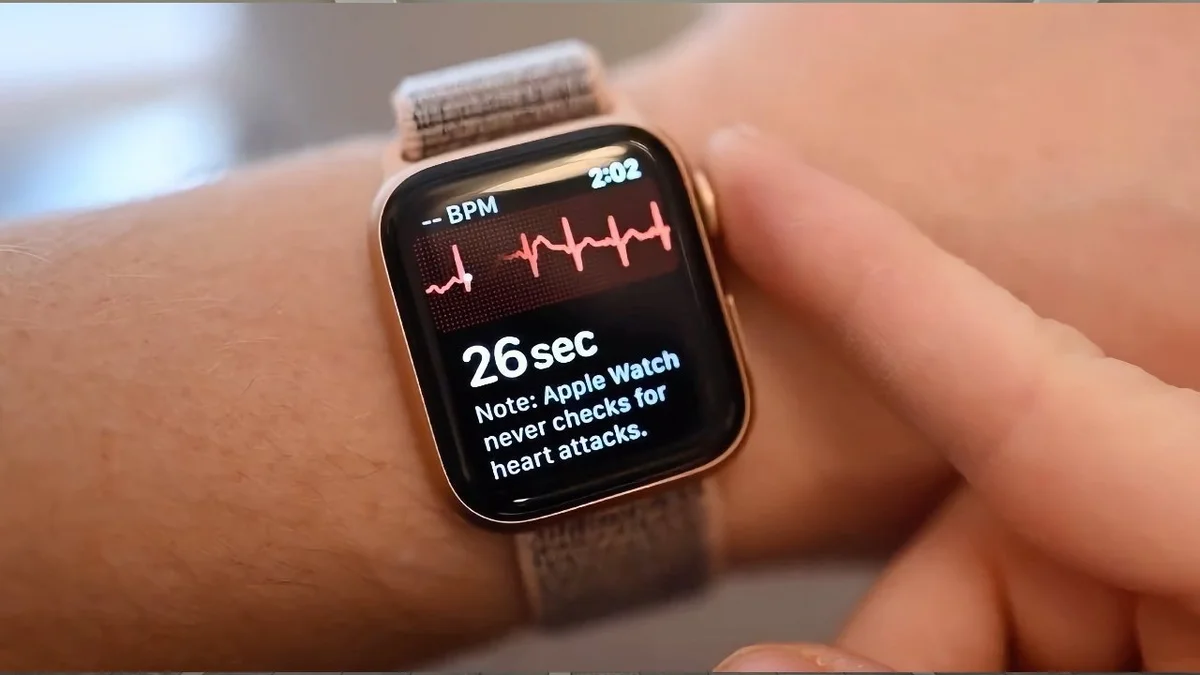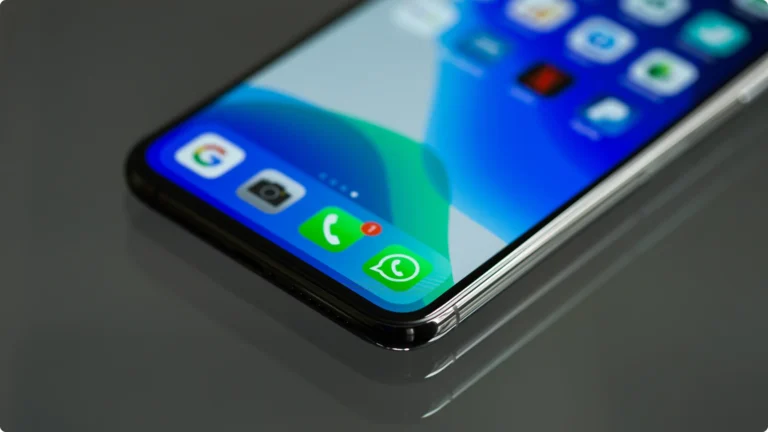How a Smart Watch Can Help You Understand Your Heart Better Let’s be real—most of us aren’t thinking about heart health until something goes wrong. But what if keeping tabs on your heart was as easy as checking a text message? That’s where the modern smartwatch with EKG comes in. We’re not talking about step …
How a Smart Watch Can Help You Understand Your Heart Better

How a Smart Watch Can Help You Understand Your Heart Better
Let’s be real—most of us aren’t thinking about heart health until something goes wrong. But what if keeping tabs on your heart was as easy as checking a text message?
That’s where the modern smartwatch with EKG comes in. We’re not talking about step counters or basic fitness bands. We’re talking about devices packing serious tech, capable of running a mini heart checkup from your wrist. Welcome to the era where your watch does more than just tell time—it tells you if your heart’s skipping a beat, literally.
Heart issues are sneaky. Many people don’t recognize the signs until they’re in the ER. That’s why more folks are turning to wearable EKG monitors—not just for athletes or tech nerds, but for everyday users who want to stay ahead of their health. Smartwatches now come loaded with cardiovascular monitoring, giving you real-time feedback and detailed insight.
It’s tech meeting health in a way that’s disrupting traditional care systems. If you’ve ever wondered whether it’s worth it—yeah, it might just change your life.
The Smartwatch Revolution: Redefining Personal Health Monitoring
That’s the power of integrating a wearable EKG monitor into your daily life.
Why it matters?
Because this kind of accessibility shifts control from clinic rooms to couches. You no longer need wires, electrodes, or a trip to the cardiologist just to get a quick check on how your ticker’s ticking. You’ve got:
- On-demand cardiovascular monitoring
- Real-time EKG readings with impressive accuracy
- Seamless syncing with health apps and cloud platforms
According to the Journal of Medical Internet Research, these smart devices now boast a diagnostic accuracy of 97%, with sensitivity at 100%. Translation? They’re getting things right—consistently. That makes them one of the most promising digital health diagnostics devices today.
The Growing Need For Digital Health Diagnostics Devices
Let’s not sugarcoat it—heart disease is the global heavyweight when it comes to health problems. Cardiovascular conditions are now a leading cause of death worldwide, affecting millions every year. And with most of us locked into desk jobs, glued to screens, or skipping gym days, these problems keep compounding.
So, what’s changing?
We’re getting smarter—literally. Consumer electronics are closing the healthcare gap. A smartwatch heart health tracking device isn’t just nice to have—it’s becoming necessary.
Check this out:
| Year | Wearable ECG Market Value (USD) |
|---|---|
| 2021 | $12.28 Billion |
| 2027 (Projected) | $35.45 Billion |
That’s a jump driven by real demand—not hype. We’re seeing more parents, patients, and even people in their 20s interested in heart tracking.
Why the surge?
– Rising awareness of heart conditions
– Increase in atrial fibrillation and hypertension cases
– Sedentary lifestyles causing hidden health risks
These wearable cardiovascular monitors are helping users catch things early. We’re not just reacting anymore—we’re doing something before it gets serious. That’s game-changing.
The Science Behind EKG-Enabled Wearable Tech
Here’s the deal. Most people think an EKG is something you only get hooked up to in a hospital. But tech’s moved fast, and now your smartwatch can pull off a single-lead electrocardiogram, right from your wrist.
It works like this:
– You rest your finger on a button or the watch’s crown
– The device completes a circuit, tracking your heart’s electrical activity
– Within seconds, you’re looking at data that could reveal atrial fibrillation or irregular rhythms
These real-time diagnostics help identify issues before they spiral. Like arrhythmias—a condition where your heart’s rhythm gets out of sync. It doesn’t always come with warning signs. But a cardiovascular monitoring smartwatch catches that misstep and notifies you instantly.
Accuracy matters here.
The data shows smart watches aren’t just good—they’re incredibly precise. We’re talking:
– 100% sensitivity in detecting irregular beats
– 95% specificity, meaning fewer false alarms
– Nearly perfect negative predictive value—if it says you’re fine, you’re probably fine
And when you’re talking about something as critical as heart health, that kind of peace of mind isn’t just helpful—it’s powerful.
What makes this really cool is the passive monitoring aspect. You don’t have to remember to run an EKG. Most devices are smart enough to check continuously in the background and alert you when something seems off.
That turns your watch into more than just a gadget.
It becomes your personal, always-on health sentry.
How Smartwatches Enhance Consumer Electronics and Health Innovations
The Integration of Personal Health Trackers with Everyday Consumer Devices
Remember when a watch just told the time? That’s ancient history now. With the rise of the smart watch with EKG, we’re witnessing a full-blown transformation of consumer electronics into personal health hubs. These devices aren’t just status symbols or techie toys—they’re rapidly becoming essential wellness companions in our day-to-day lives.
Smartwatches now track everything from sleep patterns to oxygen saturation levels. But the real breakthrough? The built-in electrocardiogram (EKG) feature. It’s giving everyday users direct access to heart data that once required a trip to the hospital. That’s like carrying a pocket-sized E.R. on your wrist.
Adoption isn’t limited to tech-savvy youngsters. In a randomized trial of older stroke survivors, more than half said they’d use a smartwatch daily for six months. That speaks volumes about how intuitive and user-friendly some of these models have become, even for folks who didn’t grow up with digital devices glued to their palms.
Whether you’re a gym regular or someone keeping an eye on heart health post-60, wearable ECG technology is bridging that gap between casual gadget and serious medical tool.
Wearable Cardiovascular Monitors as Educational Tools
A smart watch with EKG doesn’t just track your heart; it teaches you about it. One fascinating evolution in wearable tech is how these devices are becoming personal coaches in cardiovascular health. With interactive graphs, real-time alerts, and easy-to-read dashboards, they gently nudge users to dig into what their heart is saying.
Instead of vague numbers, users can now visualize their heart rhythms and patterns through intuitive apps. Some models even gamify the experience, awarding virtual badges for maintaining a steady resting heart rate or performing breathing exercises under stress.
It’s not just about data collection. It’s about turning that data into digestible, empowering knowledge—especially for first-time health tech users. Everyday folks are learning when to be concerned about irregular patterns like atrial fibrillation, thanks to in-app explanations and direct links to medical advice.
In many ways, these wearable heart monitors are acting like digital tutors. And let’s be honest: having your smartwatch walk you through what an abnormal ECG means? That’s smarter than Googling symptoms at 3 a.m. and convincing yourself it’s always something worse.
Merging Wellness with Entertainment: A New Era of Multifunctional Devices
People don’t want a device that only does one thing anymore. Why wear something bulky and clinical when you can have a sleek smart watch with EKG that also handles your Spotify playlist, texts, and daily fitness goals?
Today’s wearables live at the intersection of practicality and pleasure. You can jog to your favorite album, track your heartbeat in real time, and read your calendar—all without pulling out your phone. The appeal here isn’t just functionality; it’s about experience. These watches blend health with lifestyle to keep users engaged over the long haul.
Here’s what users look for, rolled up in one handy wrist gadget:
- Heart rate and EKG monitoring
- Daily activity and fitness tracking
- Streaming music and handling notifications
- Sleep analytics and stress reduction tools
A device that’s part doctor, part DJ, part personal assistant? That’s the magic cocktail keeping people coming back to their smartwatches—not just for health, but for the daily rhythm of life.
Real-Time Diagnostics and Their Impact on Healthcare
Breaking Down Real-Time Heart Rate Monitoring
Waiting days for health test results? That’s yesterday’s news. With a smart watch with EKG, users get instant insights that were once locked away in hospital settings. Real-time heart rate monitoring has shifted how people think about their well-being—bringing awareness not days later, but in the moment.
Someone feeling dizzy or off-kilter can check for abnormal rhythms immediately. That shift to proactive care is revolutionizing how we deal with cardiovascular issues. It’s not just about knowing your numbers; it’s about reacting in time.
Think of it as moving from “fix it when it’s broken” to “keep it running smooth.” With consistent monitoring, wearables support healthier habits, encouraging users to spot trends and even bring data to their doctor for deeper insights.
Personalized Biofeedback and Wellness Benefits
Biofeedback used to sound like sci-fi. Now, it’s as accessible as your wrist. These wearable gadgets don’t just observe—they coach. Whether you’re aiming to crush fitness goals or reduce stress spikes, personalized feedback steers your routine in the right direction.
Every user experience is different, which is why this tech tailors wellness suggestions based on your history, activity, and patterns. Want to hit a new mile time on your morning run? Getting regularly warned when stress levels spike? Your smartwatch becomes your wellness whisperer.
Biofeedback advantages come in handy ways:
- Recognizing and managing stress reactions through guided breathing
- Encouraging breaks when sedentary time exceeds healthy levels
- Promoting better sleep cycles through detailed sleep stage analysis
It’s not just numbers—it’s awareness elevated into action. This direct connection makes smartwatches feel less like machines, and more like supportive wellness buddies.
Data Accuracy and its Role in Wearable Health Monitoring Success
At the center of this tech explosion is trust. And trust hinges on accuracy. Turns out, smartwatches aren’t playing guessing games. A meta-analysis covering hundreds of thousands of users found EKG-enabled wearables had sensitivity close to 100% and specificity over 95%. That blows a lot of assumptions about “consumer-grade” tech right out of the water.
Accurate readings mean fewer false alarms—and more importantly, fewer missed warnings. People trust a smart watch with EKG not because it’s flashy, but because it keeps delivering consistent, reliable data time after time.
Behind the scenes, this kind of accuracy leans on advanced algorithms—often AI-powered—and the integration of big data to learn from millions of signals. That’s where precision meets machine learning, and it’s what turns these devices into serious contenders in modern medical diagnostics.
When people trust their device, they’re more likely to use it. And when they use it, they stay informed. That virtuous cycle is laying the foundation for a broader shift in how we see healthcare—not as a place, but as something right on our wrist.
Ethical Considerations, Usability, and Adoption Challenges
Let’s be real—when you throw the phrase “smart watch with EKG” into a conversation today, folks get curious. But with curiosity comes a lot of complicated baggage, especially when you’re dealing with people’s heart data. And it’s not just a tech issue—it’s ethical, emotional, financial, and totally personal.
Ethical Issues with Health Data Tracking Watches
The moment you allow a smartwatch to read your heart rhythms, you’re handing over intimate data. That’s not an overstatement. We’re talking about sensitive medical-grade information living on your wrist and syncing with your smartphone, the cloud, and who-knows-where-else.
The two biggest flags? First, privacy risks. Users often don’t realize how easily their heart data could be shared with third parties, intentionally or otherwise. Insurance companies, advertisers, even employers—if you’re not cautious about permissions, someone else could be profiling your health behind your back.
Second, false positives. That beeping alert that says you’re having an irregular heartbeat? It might be wrong. But now you’re anxious, in a hospital waiting room, racking up bills and unnecessary stress. Data’s powerful—but only when accurate and well-contextualized.
Usability of Smartwatches for Different Demographics
Let’s talk about your parents. Or your grandparents. That generation isn’t exactly firmware-savvy, right? For older adults—especially post-stroke patients—using a smart watch with EKG can feel like trying to operate a spaceship with mittens on.
That said, there’s been progress. Visual indicators instead of cryptic graphs, simpler interfaces, larger fonts—these shifts are helping people from all walks of life use EKG watches without feeling overwhelmed. But the tech world still assumes too much about the average user knowing what to do with a heart rate log.
Manufacturers should bake in more assistive options: voice guidance, tactile feedback, and real-time coaching—not just more data dumps.
Galloping Adoption Trends for EKG Smartwear: Market Insights
Here’s where things accelerate. In 2021, the market for wearable EKG devices was already pushing $12.28 billion, and it’s barreling toward $35.45 billion by 2027. That’s almost triple in just a few years.
What’s pushing this surge?
- The rise in heart-related conditions globally
- People wanting to monitor their health from home
- A new class of fitness freaks turned health data nerds
But it’s not just hype. As younger consumers demand more biofeedback and remote care grows, this tech is leveling up from novelty to necessity. Next phase? There’s a strong chance your health insurance provider will care more about the watch on your wrist than your recent physical.
Empowering Users with Educational Wearable Technology
So, how does a smart watch with EKG actually help someone, beyond flashing some mysterious heart squiggles? Well, unless users understand what the device is telling them, even the coolest tech falls flat.
Making Sense of the Metrics: Helping Users Take Charge of Their Health
Most folks aren’t cardiologists. And yet, we’re expecting them to interpret P-waves and rhythm strips like old pros.
That’s where design and education come in. Smartwatches now often pair with apps offering real-time explanations, in plain English, of what going on. Imagine a message saying: “Your heart is skipping beats—it could be stress—or you might want to see a doctor this week.” Way more helpful than a blinking red icon.
Success stories are piling up. Users sharing tales of early atrial fibrillation detection, adjusting their lifestyles, and dodging major cardiac events thanks to one vibration from their wrist. That’s powerful stuff.
How Smartwatch Innovations Are Setting New Consumer Standards
These gadgets are no longer just calorie counters. They’re becoming lifestyle tools—stand-ins for doctors, fitness coaches, and personal trainers.
With features like fall detection, blood oxygen tracking, and even mental wellness alerts, people now expect wearables to cover everything. EKG is just one piece of the puzzle. The phrase “smart watch with EKG” now reads like shorthand for: “my health, monitored 24/7.”
And innovation? It’s not slowing down. Think flex sensors, adaptive learning feedback, and integration with therapy apps—something big is coming, and consumers are already one step ahead in expectations.
Smartwatches as the Future of Health and Wellness Technology
Healthcare is shifting. Not in a decade—not “someday.” It’s happening now. Smartwatches with EKG are already nudging insurers to think about monitoring-based premium adjustments. They’re pulling patients into faster diagnoses through telemedicine and cutting the time between “I feel weird” and “I’m getting help.”
What we’re building is a culture of proactive health. Instead of waiting for symptoms, people are watching their heart rate trends week by week. Metrics aren’t scary anymore—they’re actionable.
The next challenge? Getting more physicians to treat these wearables as legitimate tools. Once that trust loop is closed between smartwatch, user, and doctor—the whole system becomes faster, more reactive, and way more human-centric.
Future Developments in Innovative Heart Analysis Tech
Here’s the deal: we’re just scratching the surface of what a smart watch with EKG can do. There’s a tech evolution coming, and it doesn’t look like a heart monitor—it looks like having a preventive care suite strapped to your wrist.
Predictive Health Analytics: Anticipating the Next Big Leap
Machine learning and AI aren’t just buzzwords anymore. They’re already being baked into wearable platforms.
Your smartwatch could soon do more than report what’s happening. It’ll start predicting what might go wrong. Think of it like your car’s check-engine light—but for your heart rhythm, blood pressure shifts, or stress-induced anomalies.
Predictive health tools will let wearables flag trends based purely on subtle changes. And when the system has millions of users to learn from? It becomes eerily spot-on. That’s the kind of prevention that could overhaul ER visits entirely.
What’s Next for Smartwatch Biofeedback Devices?
Beyond the heart, these devices are entering new lanes. Smart feedback during physical therapy. Guided breathing exercises when stress triggers are detected. Integration with mental health tools that check not just heart rate, but your voice, your typing speed, your sleep pattern.
We’re moving toward a wearable that treats your health like a whole system—physical, mental, emotional. And it doesn’t have to feel robotic. In fact, the future smartwatch might be your calmest, most emotionally intelligent companion.
Long-Term Vision: The Role of Smartwatches in a Health-Conscious Society
It’s not a gadget anymore. It’s a piece of your healthcare headquarters. By wearing an EKG watch, people are becoming more informed, less reactive, and genuinely healthier.
Here’s what long-term success looks like:
- Doctors syncing with watch data in real-time before appointments
- Insurance plans offering better rates for users with consistent monitoring
- Workplaces incentivizing health metrics for bonus programs
It’s not science fiction. It’s business, health, and personal lifestyle all colliding at the wrist. And if the trend keeps going, the phrase “check your heart” won’t come from a doctor—it’ll come straight from your smartwatch.






